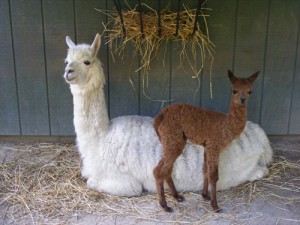
SALISBURY — Salisbury Zoo officials have announced the new herd of alpacas acquired last year is expanding already with the birth of three alpaca babies over the last month.
Over the last several weeks, three baby alpacas have been born, with the newest baby born last weekend. The older two born in October are black and white, while the latest addition to the herd is tan. The Salisbury Zoo received the herd last October from a private breeder in Ohio and the alpaca community at the facility is already growing by leaps and bounds.
The average gestation period for alpacas is 11 months, but zoo officials said it is not uncommon for a pregnancy to last for over a year. A baby alpaca is called a “cria” and will weigh between 12 and 20 pounds at birth. Most alpaca births occur during the middle of the day and are uneventful, according to zoo officials. With the three births in recent weeks, the Salisbury Zoo’s current population now stands at nine.
The alpaca, along with the llama, guanaco and vicuna, are native to South America and are members of the Camelid family. They live in the savannahs and deserts of the plains and coastal areas, but do best in the highlands of the Andes. Camelids are sure-footed animals able to climb on unstable terrain.
Alpacas and llamas are considered to be domesticated animals. Alpacas are used for wool, while llamas are used primarily for carrying heavy loads. Of the camelids, the alpacas are much smaller than their relatives the llamas and the guanaco. They are valued for their fine wool, which comes in plain black, off white, brown-black and tan. The colors are well represented in the nine alpacas at the Salisbury Zoo. The new babies and their family can be viewed daily at the Salisbury Zoo from 9 a.m. to 4:30 p.m.
